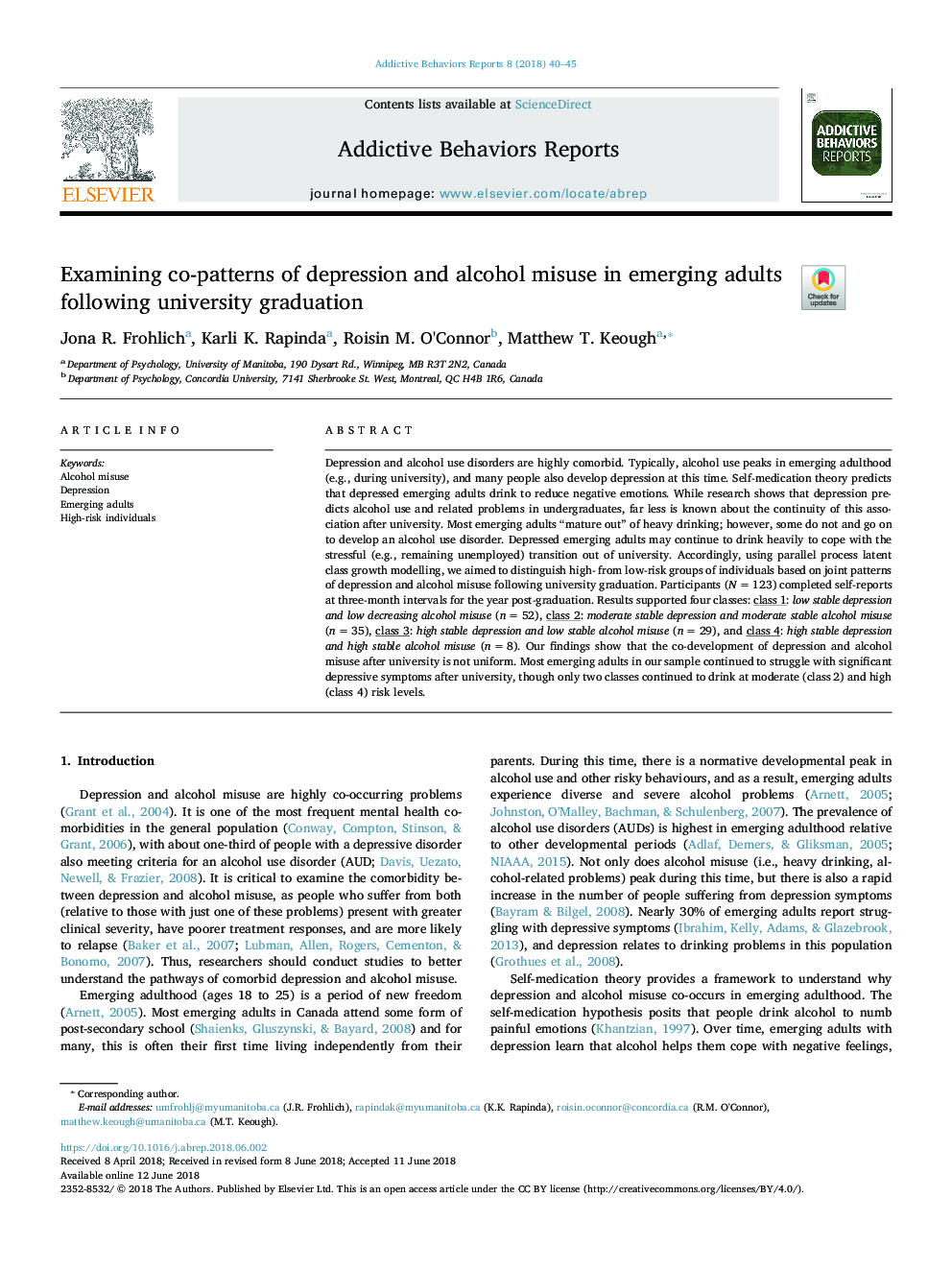| Article ID | Journal | Published Year | Pages | File Type |
|---|---|---|---|---|
| 7261317 | Addictive Behaviors Reports | 2018 | 6 Pages |
Abstract
Depression and alcohol use disorders are highly comorbid. Typically, alcohol use peaks in emerging adulthood (e.g., during university), and many people also develop depression at this time. Self-medication theory predicts that depressed emerging adults drink to reduce negative emotions. While research shows that depression predicts alcohol use and related problems in undergraduates, far less is known about the continuity of this association after university. Most emerging adults “mature out” of heavy drinking; however, some do not and go on to develop an alcohol use disorder. Depressed emerging adults may continue to drink heavily to cope with the stressful (e.g., remaining unemployed) transition out of university. Accordingly, using parallel process latent class growth modelling, we aimed to distinguish high- from low-risk groups of individuals based on joint patterns of depression and alcohol misuse following university graduation. Participants (Nâ¯=â¯123) completed self-reports at three-month intervals for the year post-graduation. Results supported four classes: class 1: low stable depression and low decreasing alcohol misuse (nâ¯=â¯52), class 2: moderate stable depression and moderate stable alcohol misuse (nâ¯=â¯35), class 3: high stable depression and low stable alcohol misuse (nâ¯=â¯29), and class 4: high stable depression and high stable alcohol misuse (nâ¯=â¯8). Our findings show that the co-development of depression and alcohol misuse after university is not uniform. Most emerging adults in our sample continued to struggle with significant depressive symptoms after university, though only two classes continued to drink at moderate (class 2) and high (class 4) risk levels.
Related Topics
Health Sciences
Medicine and Dentistry
Psychiatry and Mental Health
Authors
Jona R. Frohlich, Karli K. Rapinda, Roisin M. O'Connor, Matthew T. Keough,
